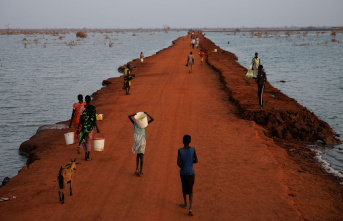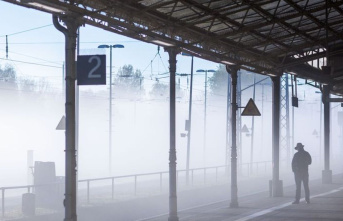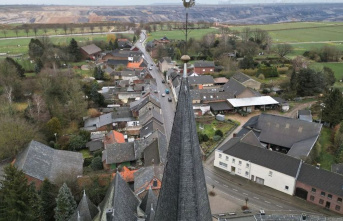Protecting the remarkable waves of a landscape for future generations: in Saint-Pierre-Quiberon, in Morbihan, the city council has voted to create the first "wave reserve" in France in order to preserve this heritage from all human intervention .
The waves appear immutable, but they are doomed to drown, says France Hydrodiversite. They can be protected by France Hydrodiversite or the Californian NGO "Save the waves".
We mean "wave", the most famous waves. These are those that are immortalized in books, paintings, guides descriptions, and attract thousands of tourists until they are named.
Gregoire Touron Gardic, a University of Portsmouth researcher specializing on the management of marine protected zones, warns that "the waves are vulnerable"
The mythical wave of "La Barre" in Anglet (Pyrenees-Atlantiques), a meeting point for the most seasoned surfers in the 1960s, thus disappeared after the construction of a breakwater at the entrance to the port which altered current dynamics and sedimentology.
The Spanish Basque Country's Mundaka wave, once considered the best European wave sport, has been destroyed by dredging that altered the ground's nature.
The wild coast of Quiberon is classified Natura 2000. The waves that crash against the jagged rocks seem to be a priori unaffected by human intervention. In February, the municipal council of Saint-Pierre-Quiberon nevertheless voted to create a "wave reserve" of around 30 ha, to "preserve and promote their richness and quality".
The declaration of public utility by the town hall refers to "exceptional waves", which are a "heritage" and "a natural, sport, socio-economic, and cultural resource".
The originator of the initiative was Erwan Simon, a Breton surfer, who is also co-founder of France Hydrodiversite.
"We protect biodiversity, but the waves don't live and are not legally recognized in France," he said. He argues that each wave is unique and hydrodiversity (the diversity of forms and movements water) must be protected wherever it is extraordinary. Australia or the United States.
The young Breton "reserve", while it does not have legal status, is still symbolic. "We are committed not to authorizing sand extract work or any other industrial activity that could have an effect on the shape of waves," stated Mayor Stephanie Doyen. She also recalled that a abandoned cement plant that planned sea sand drilling "could" have had an "impact".
The elected official adds, "The interest was to dedicate the heritage character these waves that attract a lot people, while recalling the vulnerability of their importance and the importance protecting them."
It is possible to make it a reserve for surfers.
Gregoire Touron Gardic explains that waves provide many services to the marine environment. The researcher pleads for it to be an "environmental protection tool".
Who says that protection of waves means protection of the seabed?
"There will always be waves on the coast. It creates many interconnections between the environment, the ocean, and the local coast environment. Julien Touboul (deputy director, Institute of Ocean Sciences, Marseille) said that it is worth asking whether waves at particular sites should be preserved for scientific purposes. .
Frederic Habasque (geologist, cofounder of the association) says that the idea is to recognize waves as an extraordinary phenomenon that only occurs in one location.
"If a wave vanishes, we won’t find it." Scientists will not be able artificially recreate Quiberon waves even if they try to model them with artificial reefs.












